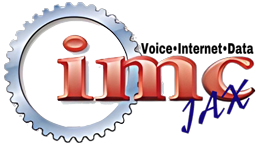 Imagine going to the beach, sitting down near the water, and asking the tide to stop advancing. Futile, right? Trying to stop the growth of data is equally futile. Our world is saturated with data, and don’t expect it to go away anytime soon. Rather than trying to stop data growth, update your tools and processes to ensure your data is fully protected.
Imagine going to the beach, sitting down near the water, and asking the tide to stop advancing. Futile, right? Trying to stop the growth of data is equally futile. Our world is saturated with data, and don’t expect it to go away anytime soon. Rather than trying to stop data growth, update your tools and processes to ensure your data is fully protected.
Eliminate Outdated Tools and Processes
According to a whitepaper by Commvault, disaster recovery is impeded by a number of things, including outdated tools and processes. Much of disaster recovery is cumbersome and difficult because of outdated tools. The use of tape is a slow and inefficient way to store data—if you are using it, stop! Point tools, which once had their place, are now out of date, producing unneeded complexity and hindering recovery from data loss and power cut incidents.
Outdated processes can also slow down recovery from data loss and outages. Even one serious outage, due to disaster or just a power failure, can put your business at peril. A good starting point is eliminating redundant data. There’s plenty of new data—it’s growing by 20% to 50% per year—without having redundancy within the backup data set. Also, while servers may be virtualized, storage hasn’t kept up. This makes data recovery slow and laborious, with one system or database downloaded at a time. Add to this network bottlenecks, and you might spend days and even weeks trying to recover data. And what if a file is lost when it’s most needed? Often that requires a call to IT. With the growth of virtual offices and mobile data, users need a self-service solution. Finally, lack of automation slows things down considerably. Someone on-site has the laborious task of patching up problems and repeatedly backing up data.
Disaster Recovery Solutions
The best plan is to have a common platform and a hybridized structure for storing data. Some storage can be in the cloud, and some data storage can be onsite. Another solution is implementation of virtualization technology and software-defined storage, a practice which separates software and applications from the underlying hardware infrastructure. Tools such as analytics and snapshots provide real-time insight and instantaneous recovery of key applications and systems.
Rather than wishing that data not continue to grow, update your tools and processes to ensure protection of your data—the goal of Disaster Recovery. To get help with protecting your data, call IMCJAX today at (904) 400-7300.



